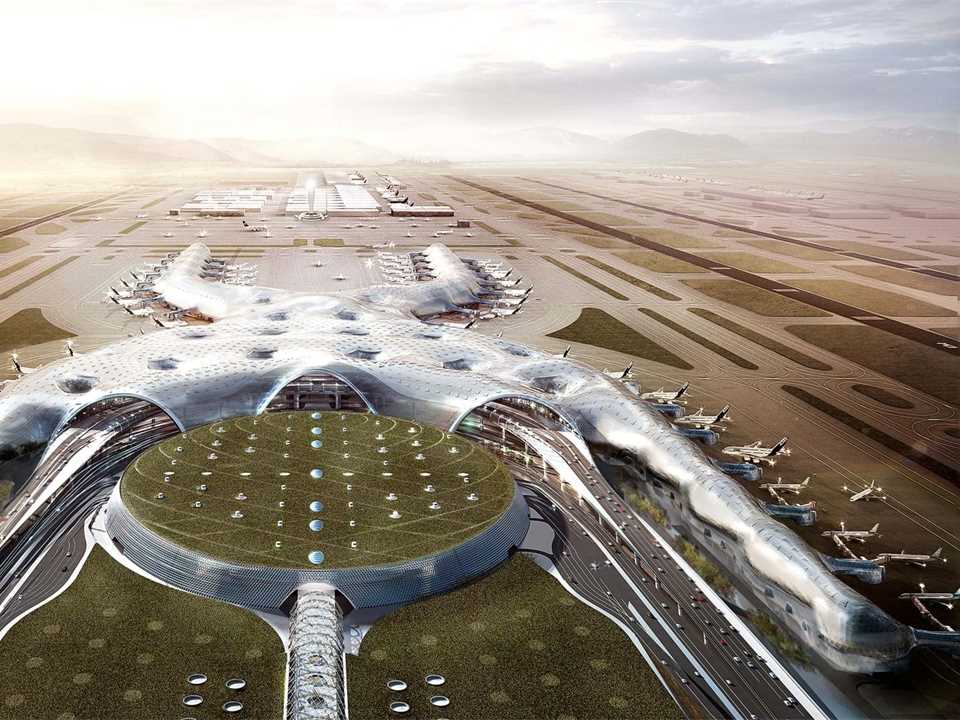RIO DE JANEIRO, BRAZIL – The plans were terrific: It was to become the biggest airport in the Western Hemisphere and the third largest in the world. A megaproject for a megacity. But instead of living the dream, the cancellation of the construction of the Mexico City Texcoco Airport, which was supposed to be Mexico City’s New International Airport, will cost a horrific US$16.12 billion, according to an investigation published by the Federal Auditor’s Office (ASF).
This amount was 232% more than what was previously predicted, according to the audit. However, it caused controversy with Mexico’s president, Andres Manuel Lopez Obrador, who claimed to have different data. One day later, the ASF admitted some methodological deficiencies in the investigation; therefore, the overall cost may be lower.
A cost that went through the roof
Back in 2018, the newly formed government of Lopez Obrador decided to cancel the construction of the Mexico City Texcoco Airport. Instead, the new government would refurbish the Santa Lucía Air Force base into a mixed commercial-military airport. This new hub would work alongside the current Mexico City International Airport (AICM) and Toluca International Airport (AIT).
The decision was met with mixed feelings. The airline industry repeatedly stated they would prefer to operate from one airport rather than divide their flights. Meanwhile, Lopez Obrador refuted every claim by saying that the Texcoco Airport was filled with controversy. He added that canceling this airport and building a new one would be cheaper in the end. Lopez Obrador claimed that the cancelation would cost nearly US$5 billion.

This past weekend, the ASF seemed to differ on that point. In an audit, the ASF said that the decision to scrap Texcoco’s Airport will cost US$16.12 billion at least due to many standing contracts and trials.
The audit backfired
Yesterday, Lopez Obrador roared back against the ASF. As he usually does when facing controversy in his government, the Mexican president claimed to have different data. “I would like them to explain that piece of information, which is wrong – it’s exaggerated,” he said.
One day later, the principal auditor of the airport investigation seemed to agree with the president. In a statement, he said that the overall cost is lower. “The audit was made using a flawed methodology, so the ASF will launch a re-evaluation of the Texcoco Airport cancelation and republish its results in the future,” he said.
What’s the future for Mexico City airports?
Despite the actual cost of canceling Texcoco’s Airport, there’s one thing for sure: the current government is going forward with its plan of creating a three-airport system to serve Mexico City.
Two weeks ago, the first four Mexican airlines landed at Santa Lucía during a military celebration. These four carriers were Viva Aerobus, Volaris, Aeromar, and Transportes Aéreos Regionales.
The Santa Lucía International Airport will be inaugurated on March 21, 2022, just over one year from now. The Mexican army is building the new hub, and it is on the clock to deliver one of the president’s signature projects.
Once the three airports are up and running, the government expects to handle up to 125 million passengers per year. In a statement published last year, the Mexican government said that Mexico City’s International Airport will receive 50 million passengers per year. It will have 1,300 daily operations, as it had before the COVID-19 pandemic.
Santa Lucía’s International Airport will have 60 million passengers per year with 1,300 daily operations. Toluca International Airport will receive up to 15 million passengers per year.
Nevertheless, the hopes of the current Mexican administration could be shattered.
Challenges ahead
The current COVID-19 is the biggest challenge the three-airport system faces at the moment. Unfortunately for the Mexican aviation industry, the pandemic made the need for a new airport redundant. It will take years before the airline industry recovers fully.
But when it does, will the three-airport system actually work? Despite what the Mexican government says, there’s no actual evidence that it will. Toluca International Airport is a white elephant with a capacity of 10 million passengers per year; it only receives 700,000.

